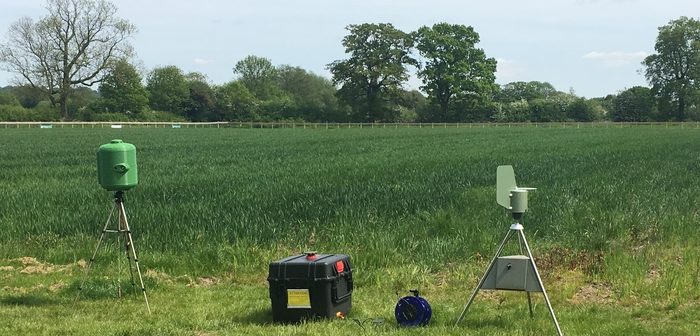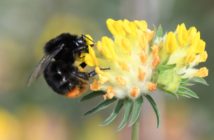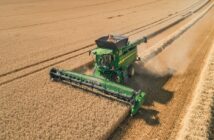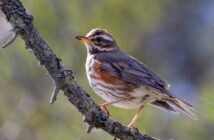New spore trapping technology was one of the highlights of a Hands Free Hectare open day held by Harper Adams recently.
Spore Sentry – a joint initiative between Bayer, Fera, University of Hertfordshire and manufacturer Optisense is being tested as part of HAUC’s Hands Free Hectare initiative. This first ‘realtime’ spore detection system could be commercially available in just a few years.
One of those present on the day was Hutchinson’s and Hands Free Hectare agronomist Kieran Walsh. He feels the benefits go beyond more accurate disease prediction. Spore Sentry data can be accessed remotely giving him a picture of what is happening on farm before he arrives. “My time on farm is precious so having an idea on potential issues in advance will allow me to manage my time more effectively.”
He also believes it will allow farmers to manage crops more effectively. “Planning spray rosters is often based on the most convenient routing for the sprayer. This is understandable but this technology will allow us to schedule sprayer patterns by crop risk. Farm revenue is ultimately down to optimising crop performance, knowing which fields are under the greatest risk is bound to benefit.”
But ultimately it is better disease prediction and agronomy best practice that is the key win for Mr Walsh. “There isn’t a one size fits all when it comes to diseases and pest. Localised weather means that disease or pest severity can vary over relatively small distances.
“Currently what I know is that a crop has been exposed to Septoria from the autumn onwards and my predictions are based on visual assessments and weather on the run up to GS30, plus variety rating and drilling date. Once Septoria is on the leaf the process of penetrating it start and this is the unknown.”
According to Rosalind Martin of Bayer it will be an early warning system. “Agronomists and farmers could have results back in less than two hours. It will give an accurate picture of field conditions allowing better targeting of fungicide timings and dose rates.
“That is important because the latent phase of diseases such as Septoria can be between 10 to 28 days. “It’s not spore dispersal that is critical but when spores are circulating in infectious conditions. With SporeSentry we will be able to determine when this is, and therefore have a good indication of Septoria pressure ahead of symptoms expressing on leaf surfaces,” he says.




